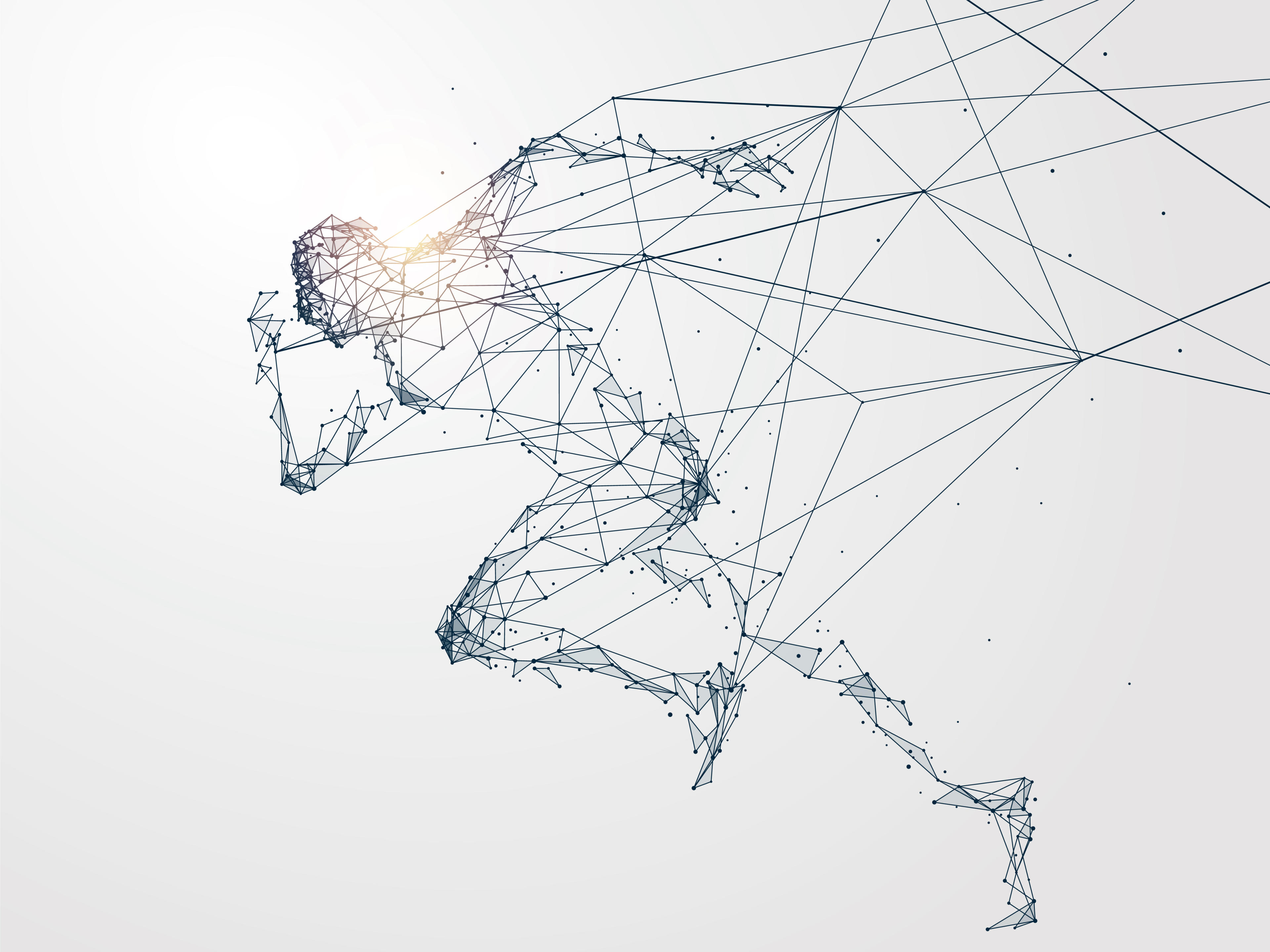Advances in AI are rapidly changing the way organisations run and operate. What started off as intelligent AI chatbots and assistants is now fast evolving into agentic AI, autonomous agents that can complete end-to-end workflows without human intervention. Agentic AI is part of Gartner’s top 10 strategic technology trends for 2025, and all signs indicate that organisations not adopting AI will be left behind.
However, AI implementation is much more than just rolling out new technology. The human element is a foundational factor that is often overlooked. Your teams are used to doing things a certain way and have developed habits and processes that AI will transform radically. Are they, and in effect your organisation, ready to make the change?
Preparing your enterprise for an AI future isn't just a technical challenge; it's a people challenge. Success will depend on how well you evolve your talent strategies today to meet the needs of tomorrow.
This blog explores talent strategies to help you prepare your people and your organisation for the upcoming AI revolution.
What Versioning Up Your Talent Looks Like
At V2 AI, we collaborate with our clients to deliver end-to-end AI transformation, including employee upskilling and training. Our goal is to identify existing talent and knowledge gaps and fill them alongside the technology upgrade. This could mean both retraining existing employees and talent acquisition support as needed.
For example, one of our banking clients lacked the required skills and engaged V2 AI to support their transformation journey. We took a multi-faceted approach, co-delivering with their teams and training them along the way. Simultaneously, we assisted the customer in conducting interviews and hiring their in-house lead, whom we could then hand over the engagement to. This meant that they could retain skills in-house and retain all the IP and knowledge from their existing team.
Our experience in AI training and recruitment has provided us with unique insights into the type of workforce required to best prepare an AI-enabled organisation.
How Will Roles Change?
AI is forcing everyone to make the shift from task doers to problem solvers. AI can handle routine, repetitive, or highly structured tasks, but humans are still necessary to provide thought leadership, strategy, creativity, and critical thinking. As AI capabilities increase, organisations will need their employees to make the shift from doing a task to designing or overseeing how the task is done. They will need to learn how to collaborate with AI tools to accelerate their daily work and deliver results across multiple roles.
Besides, the introduction of AI will also create new roles. For example, there may be a need to fill positions such as an AI strategist, a Chief AI officer, or AI integration engineers. You may need additional capabilities in areas such as AI ethics and risk, process and change management, some of which might be unique to your organisation or industry.
Workforce Management in the Post-AI Era
There's also an opportunity to train employees to embrace continuous learning, encouraging them to adapt to new ways of working, rethink established processes, and adopt more productive approaches. Here are some strategies you can use to support your workforce in a way that accelerates AI adoption, rather than creating roadblocks.
Upskilling Over Replacement
AI replacing jobs is a knee-jerk response from clickbait media outlets. The reality is far more nuanced. Most large enterprises cannot afford to let go of thousands of employees and lose the domain knowledge and internal experience that they bring to the table. At the same time, AI has the potential to significantly alter the nature of most workflows to an extent that employees may find themselves working in completely new fields.
For example, consider customer service. Yes, AI chatbots can take over the workload of routine FAQs and status updates. But what about complex scenarios? Consider the case of a customer who is experiencing fraudulent blackmail and attempting to perform a large fund transfer with customer service. An AI bot may approve the transaction or flag it for later review, but neither option can fully meet the customer’s needs. A human is needed to understand the emotional context of the situation, warn the customer that they are perhaps experiencing a scam, and contact local authorities to help de-escalate the situation.
Hence, customer service staff who may have previously handled routine customer challenges will now need to be upskilled so they can handle complex cases that require skills such as psychology, diplomacy, empathetic communication, negotiation, and conflict resolution.
To create a successful reskilling program, organisation leaders need a sophisticated understanding of existing skills and required or future skills. Reskilling should be treated as a change management initiative whenever possible, with training integrated into existing work schedules in a manner that meets both employee and organisational needs.

Hire the Right Talent
Recruiting the right skill set will no longer be easy, given that old roles and positions may not map neatly into a post-AI world. Traditional job descriptions are quickly becoming outdated. Hiring for adaptability, problem-solving, and learning agility, rather than fixed skills, is more effective in the long run.
The focus should shift from static credentials to dynamic capabilities. This may require updating the interview process to include role simulations or other practical skill demonstrations, rather than relying on traditional hiring methodologies.
Hiring should also emphasise hybrid skillsets: data literacy paired with domain knowledge, combined with product thinking. Employees with a product-thinking mindset can problem-solve in a way that meets business, technology, and customer goals. They can also analyse data and take data-driven decisions in a way that meets broader KPIs. While this will look different for every role, AI, especially conversational analytics (also known as Generative Business Intelligence), is a key enabler in this space, and you want talent that can work comfortably within this AI-powered operating model.
While technical AI expertise will remain crucial, there is also a growing need for "translators", individuals who can bridge the gap between technical teams and business functions. For example, you will need domain experts who can set up AI agent workflows in a way that enhances existing team operations without causing confusion or repeat work.

Build a Culture of Lifelong Learning
Perhaps the most critical shift is cultural. AI-readiness isn’t a one-off initiative; it’s a mindset. AI is evolving at a rapid pace, and the only way to keep up is to create a culture where experimentation and “fail fast” are actively encouraged. Employees should feel empowered to innovate within their roles and utilise AI in ways that best suit their needs.
Innovation is accelerated if the organisation takes a continuous learning approach. With AI doing some of the heavy lifting, time freed up can be allocated for personal and organisational learning and development. For example, employees can be encouraged to document and share experiences, create AI-powered app prototypes, and launch passion projects that align with overall business goals.
Such an approach also fosters cross-functional collaboration and cross-skilling, which may be more important than single vertical specialisation in the age of AI.
HR and L&D teams should lead this charge, not as compliance officers, but as enablers of transformation. This includes incentivising learning, embedding microlearning into daily workflows, and recognising those who take initiative in upskilling themselves and others.
Conclusion
The average half-life of skills is now less than five years, with some tech roles having a half-life of less than two and a half years. Your organisation’s future success in an AI-powered world depends on how well you evolve your talent strategies today to meet the needs of tomorrow. This means hiring for adaptability, investing in upskilling, redesigning roles to facilitate human-AI collaboration, and fostering a culture that rewards lifelong learning and innovation.
The organisations that will thrive aren’t the ones with the most AI tools; they’re the ones with the most AI-ready people. It’s time to make talent the centrepiece of your AI strategy.
The future of work is being written now. Will your workforce be ready to lead it?
At V2 AI, we deliver, empower, and enable organisations to achieve the full potential of their data and AI initiatives. Contact us to learn more.




